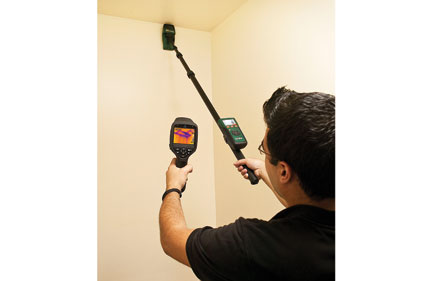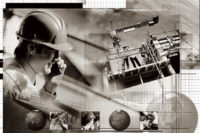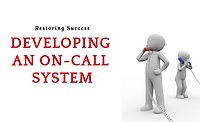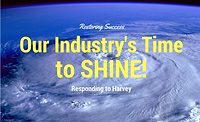Restoring Success: An Industry Evolving
Technology and consumer behavior has had an impact on nearly every industry in the last 20 years, however, it is my belief that ours has evolved as a profession.

I marvel at the evolution of our industry over the last couple of decades. I believe we are operating in a time of great opportunity. With that said, it is important to have a compass of where we are today and how we got here so that we can look forward. Being progressive and adaptable is key to our continued success as individuals, as companies and as an industry.
For over 14 years, I have relished the opportunity of being a part of an industry that has evolved so dramatically. For years, I have been speaking of the evolution of the industry that I have enjoyed watching, being part of and experiencing.
I can tell you that expectations have changed over the years, as has consumer behavior. When was the last time you opened a phone book? I don’t know exactly when it happened, however, my natural instinct is no longer to reach for a phone book, but rather click around on a device or open a web browser. This is the new norm.
Technology and consumer behavior has had an impact on nearly every industry in the last 20 years, however, it is my belief that ours has evolved as a profession. Gone are the days that you could buy some equipment and start offering services without technical expertise and training. It is no longer good enough to be a good restorer in the traditional sense as it may have been 15 or 20 years ago. We need to be able to utilize technology. Science has become a cornerstone of the industry and is applied to everything from equipment and products to the actual processes.
The IICRC was formed in 1976 and its Standards of Care are continually being revised, added to and cover a variety of specific disciplines from water to floor care. Today, there are over 53,000 registrants and over 6,000 Certified Firms. Most insurance carriers recognize and require IICRC credentials to participate on any type of vendor program which was not a common practice even 15 years ago.
As services become standardized and in consideration of our industry’s evolution, we should consider the challenge of commoditization. Over the years, many industries struggle to overcome the illusion of a product or service becoming simply a commodity. As an example, this is an ongoing battle in the insurance industry where there is a constant stream of messaging to encourage consumers to consider things than other price. Although we may experience this concept to some extent today, as consumer awareness and the standardization of procedures are developed, we should consider this as we look ahead.
I recently spoke to several industry instructors that have been involved in restoration for many years. They too agree that there’s been a dramatic and remarkable industry evolution:
Don McNulty, known in the industry for his contribution in the field of bio-remediation, believes that we are in a renaissance period in context of the life order of: birth, infancy, growth, maturity, and renaissance. The renaissance is marked by what he sees as a transition that is going to professional management of the organizations, similar to when hospitals went from being managed by doctors to professional managers.
McNulty believes that pioneers, like Jeff Bishop, brought science to the field. He has watched great innovation and advancement of green products and their effectiveness and he believes that the equipment used in the industry also has evolved tremendously and has been designed to work with the science that applies.
Destry Ransdell, IICRC Instructor, has witnessed an increase of consumer awareness and education in a broad sense, but most notably regarding water damage and mold. Destry also noted that continual and rapid developments in equipment pose challenges to organizations that try to keep a leading edge on technology. It can be financially challenging to turn your equipment over at the pace that new technology becomes available.
Ron Valega, IICRC Instructor, has seen social media play an increased role in marketing and education. Being in the business for over 40 years, he said with a smile, “We are not just (restorers) any more - we are professionals.” He also observed a dramatic increase in both the use and the need to employ technology throughout operations. He believes that we need to add attention to the additional training that is needed to operate the software, systems and devices that are being utilized.
As an industry, we are evolving at a rapid pace. Be aware of opportunities presented and nurture your organization to evolve with it.
Looking for a reprint of this article?
From high-res PDFs to custom plaques, order your copy today!







